| Gemstone Chart |
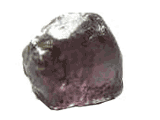 Natural Color Change Garnet Natural Color Change Garnet
Color Change Garnet is one of the most rare, interesting, and phenomenal of all gems.Color Change Garnet gem stone rough from Madagascar Gems is fine quality.
Color: Color changing from green or lavender to red.
Categories: semi-precious stone
Crystal Group: Cubic
Refractive Index: Nesosilicate
Hardness: 7-7.5
Density: 3.8
Occurrence: East Africa, Madagascar, Sri Lanka
| 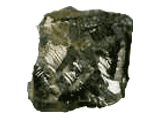 Natural Diamond Natural Diamond
Diamond is the ultimate gemstone, having few weaknesses and many strengths. It is well known that Diamond is the hardest substance found in nature.
Color: White, yellow, brown, black. Rarely, blue, red, or pink.
Categories: precious stone
Chemical Composition: C
Crystal Group: Cubic
Refractive Index: 2.417
Hardness: 10
Density: 3.52
Occurrence: Africa, Russia, Canada, Australia, India
| 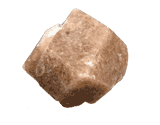 Natural Grossularite Natural Grossularite
A member of the garnet group, grossularite is found in a variety of colors including, yellow, brown, white, colorless, green, violet-red, and orangey red.
Color: Brown, yellow, green
Categories: semi-precious stone
Chemical Composition: Ca3Al2(SiO4)3
Crystal Group: Cubic
Refractive Index: 1.72-1.748
Hardness: 7.25
Density: 3.65
Occurrence: Canada, East Africa, Pakistan, New Zealand, Ceylon, South Africa, U.S.A.
| 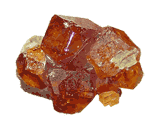 Natural Hessonite Natural Hessonite
Hessonite is one of the gem varieties of the garnet mineral, grossular. Hessonite is usually cinnamon brown and has been called "cinnamon stone". Hessonite can also be orange; this color is becoming common on the gem markets.
Color: Brownish-orange, brownish yellow, aurora red
Categories: semi-precious stone
Chemical Composition: Ca3Al2(SIO4)3
Crystal Group: Cubic
Refractive Index: 1.72-1.74
Hardness: 7.25
Density: 3.65
Occurrence: Sri Lanka, Mexico, Brazil, Canada, Madagascar
| 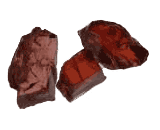 Natural Malaia Garnet Natural Malaia Garnet
Malaia garnet is a mixture of almandine, pyrope, and spessartine. It has remained the preserve of collectors for the 2 decades since it was discovered, mainly due to its extreme rarity.Tanzania is the known source for this lovely gemstone.
Color: orangey pink, champagne, orange brown, copper-pink.
Categories: semi-precious stone
Chemical Composition: [Mg3 + Mn3]AL2(SIO4)
Crystal Group: Cubic
Refractive Index: 1.73 - 1.81
Hardness: 7 - 7.5
Density: 3.65 - 4.20
Occurrence: Kenya, Tanzania, Madagascar
|  Natural Rhodolite Natural Rhodolite
Rhodolite is a beautiful pink to violetish red garnet which was named after the rhododendron flower. Commercially rhodolite is one of the most important garnets. Rhodolite is quite available in small sizes which are relatively low in price. Very fine large rhodolite garnets are rare and are moderate in price.
Color: red, purple-red
Categories: semi-precious stone
Chemical Composition: Al2(SiO4)3
Crystal Group: Cubic
Refractive Index: 1.75 - 1.77
Hardness: 7.25
Density: 3.74 - 3.94
Occurrence: Brazil, East Africa, Ceylon, India, Madagascar, Zimbabwe
| 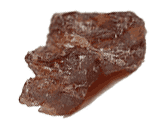 Natural Spessartite Natural Spessartite
The Spessartite is one of the most popular of all garnets. It is highly desired by collectors, jewelry designers and gem lovers.The sources for gem quality spessartine are Sri Lanka and Brazil.
Color: Orange, yellow, brown
Categories: semi-precious stone
Chemical Composition: Mn3Al2(SiO4)3
Crystal Group: Cubic
Refractive Index: 1.79-1.81
Hardness: 7.25
Density: 4.14-4.20
Occurrence: Germany, Ceylon, Burma, Nigeria, Maevatanana-Madagascar, Isoanala-Madagascar, East Africa.
| 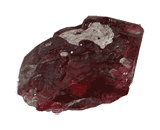 Natural Spinel Natural Spinel
Spinel is the magnesium aluminium member of the larger spinel group of minerals. It has the formula MgAl2O4.Pure spinel is white, but impurities give it a wide range of colors.Almost all colors are used in jewelry, but the most valuable and popular color is the deep red. Spinel is cut into gems for use as jewelry. The deep-red variety, known as ruby spinel, is the most prized form.
Color: orange, pink, black, blue, lavender, mauve, greenish blue, and vivid red
Categories: semi-precious stone
Chemical Composition: MgAl2O4
Crystal Group: Cubic
Refractive Index: 1.718 (-.006,+.044)
Hardness: 8
Density: 3.60 (-.03, +.30)
Occurrence: Mogok, Burma; Sri Lanka; Amboseli district, Kenya; Jemaa district, Nigeria; Matombo, Umba, and Tunduru Tanzania; Hunza, Pakistan; Pamir range, Tajikstan; Luc Yen, Vietnam; Madagascar; Australia; Sweden; Brazil.
|
|
